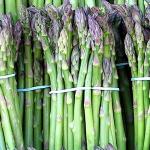A recently published story in the BMJ links the risk of breast cancer and all cancers to consumption of what are termed "ultra-processed" foods.
Food & Nutrition
The Trump administration has recently proposed a rather drastic change to the Supplemental Nutrition Assistance Program (SNAP).
A recent study shed light on something we've known for some time, but haven't quite lived by: Eating slowly could curb weight gain. Here's why this makes sense.
American snowboarder slash Superwoman Chloe Kim just won her first Olympic gold medal in the Women's Snowboardi
Obviously, we need food labels. We need to know what the product is in that multicolored can or box, and having the information on the nutritional content of the product can be helpful when used appropriately.
This flu season, one product is making its comeback: orange juice. Sales of OJ seem to have gotten a boost — after years of decline — due to consumers' fears of getting the dreaded illness.
Major universities (think Harvard, Columbia, Duke, and the University of California), have hopped on the "alternative medicine" bandwagon, establishing centers and programs to supposedly evaluate treatments not based on Western medicine.
One of the top trending Google searches at the time of this writing was "asparagine," one of the roughly 20 amino acids that make up the proteins in our bodies and in our food.
Before I start ranting about this and that, here's the take-home message.
In June 2016, the International Agency for Research on Cancer (IARC) published their findings on coffee, mate and hot beverages and their role in carcinogenesis.










